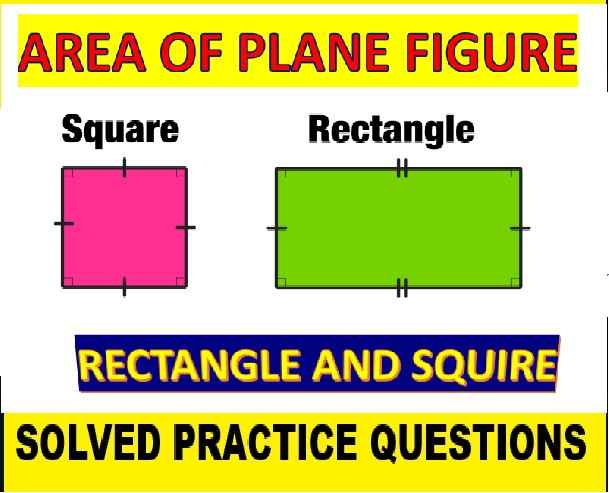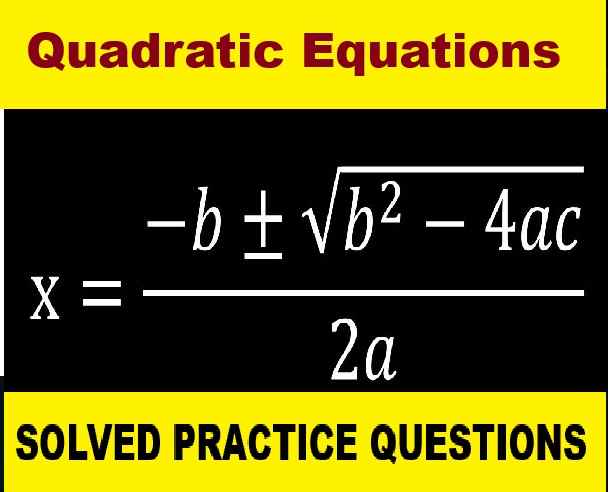ML Aggarwal Direct and Inverse Variation Exe-9.1 Class 8 ICSE Ch-9 Maths Solutions. We Provide Step by Step Answer of Exe-9.1 Questions for Direct and Inverse Variation as council prescribe guideline for upcoming board exam. Visit official Website CISCE for detail information about ICSE Board Class-8.
ML Aggarwal Direct and Inverse Variation Exe-9.1 Class 8 ICSE Maths Solutions
| Board | ICSE |
| Publications | Avichal Publishig Company (APC) |
| Subject | Maths |
| Class | 8th |
| Chapter-9 | Direct and Inverse Variation |
| Writer | ML Aggarwal |
| Book Name | Understanding |
| Topics | Solution of Exe-9.1 Questions |
| Edition | 2023-2024 |
Direct and Inverse Variation Exe-9.1
ML Aggarwal Class 8 ICSE Maths Solutions
Page-152
Question 1. Observe the following tables and find if x and y are directly proportional:
(i)
| x | 5 | 8 | 12 | 15 | 18 | 20 |
| y | 15 | 24 | 36 | 60 | 72 | 100 |
(ii)
| x | 3 | 5 | 7 | 9 | 10 |
| y | 9 | 15 | 21 | 27 | 30 |
Answer:
(i) x/y = 5/15 = 1/3
x/y = 8/24 = 1/3
x/y = 12/36 = 1/3
But, x/y = 15/60 = 1/4
x/y = 18/72 = 1/4
x/y = 20/100 = 1/5 which is not equal to 1/3
So, x/y is not constant.
Therefore, x and y are not directly proportional.
(ii) x/y = 3/9 = 1/3
x/y = 5/15 = 1/3
x/y = 7/21 = 1/3
x/y = 9/27 = 1/3
x/y = 10/30 = 1/3
so, x/y is constant.
Therefore, x and y are directly proportional.
Direct and Inverse Variation Exe-9.1
ML Aggarwal Class 8 ICSE Maths Solutions
Page-153
Question 2. If x and y are in direct variation, complete the following tables:
(i)
| x | 3 | 5 | … | … | 10 |
| y | 45 | … | 90 | 120 | ….. |
(ii)
| x | 4 | 8 | … | 20 | 28 |
| y | 7 | … | 21 | …… | ….. |
Answer:
(i) x/y = 3/45 = 1/15
x/y is constant with 1/15.
Hence, x and y are directly proportional.
Now,
x1/y1 = 1/15 => 5/y1 = 1/15
y1 = 5 × 15 = 75
x2/y2 = x2/90 = 1/15
x2 = 90/15 = 6
x3/y3 = x3/120 = 1/15
x3 = 120/15 = 8
x4/y4 = 10/y4 = 1/15
y4 = 10 × 15 = 150
| x | 3 | 5 | 6 | 8 | 10 |
| y | 45 | 75 | 90 | 120 | 150 |
(ii) x/y = 4/7
x/y is constant with 4/7.
Hence, x and y are directly proportional.
x1/y1 = 8/y1 = 4/7
y1 = (8 × 7)/4 = 14
x2/y2 = x2/21 = 4/7
x2 = (21 × 4)/7 = 12
x3/y3 = 21/y3 = 4/7
y3 = (21 × 7)/4 = 35
x4/y4 = 28/y4 = 4/7
y4 = (28 × 7)/4 = 49
| x | 4 | 8 | 12 | 20 | 28 |
| y | 7 | 14 | 21 | 35 | 49 |
Question 3. If 8 metres cloth costs ₹250, find the cost of 5·8 metres of the same cloth.
Answer:
Let the cost of 5.8 m cloth = Rs. x
length in m=8, 5.8
cost of cloth (Rs.) =250 , x
hence it is the case of direct variation
Therefore 8:250 = 5.8:x
8/250 = 5.8/x
x = (5.8 × 250)/8
= ₹181.25
Question 4. If a labourer earns ₹672 per week, how much will he earn in 18 days?
Answer:
Let the labourer earns Rs. x in 18 days
days= 7, 18
Money earned (in Rs.)=672,x
Hence in the case of direct variation
So, 7: 672 = 18: x
7/672 = 18/x
x = (18 × 672)/7
= ₹1728
Question 5. If 175 dollars cost ₹7350, how many dollars can be purchased in ₹24024?
Answer:
Let x dollars be purchased in Rs.24024
Cost (in Rs.)=7350,24024
Dollars=175,x
Hence the question is of direct variation.
So, 7350: 175 = 24024: x
7350/175 = 24024/x
x = (24024 × 175)/7350
= 572 Dollars
Question 6. If a car travels 67·5 km in 4·5 litres of petrol, how many kilometres will it travel in 26-4 litres of petrol?
Answer:
Let car travels x km in 26.4 lts. of petrol.
Distance (in km) =x , 67.5
Petrol (in 1)=26.4,4.5
Hence the question is of direct variation .
So, x: 26.4 = 67.5: 4.5
x/26.4 = 67.5/4.5
x = (67.5 × 26.4)/4.5
= 396 km
Question 7. If the thickness of a pile of 12 cardboard sheets is 45 mm, then how many sheets of the same cardboard would be 90 cm thick?
Answer:
Thickness of 12 cardboard = 45 mm
Let ‘x’ be the number of cardboard whose thickness is 90 cm = 900 m
So, 12: x = 45: 900
12/x = 45/900
x = (12 × 900)/45
= 240 mm
Thickness of 90 cardboard is 240 mm.
Question 8. In a model of a ship, the mast (flagstaff) is 6 cm high, while the mast of the actual ship is 9 m high. If the length of the ship is 33 m, how long is the model of the ship?
Answer:
Height of a model of ship=6 cm.
But height of actual ship=9 m.
If length of ship=33 m
Let length of model =x
Therefore 6:x=9m :33
6/x = 9/33
x = (6 × 33)/9
∴ Length of model is 22 cm.
Question 9. The mass of an aluminum rod varies directly with its length. If a 16 cm long rod has a mass of 192 g, find the length of the rod whose mass is 105 g.
Answer:
length of rod=16 cm and mass=192 kg.
if mass is 105 g,then
then let length of rod=x cm.
Therefore 16:x=192:105
16/x = 192/105
x = (16 × 105)/192
= 35/4
= 8.75 cm
∴ Length of rod = 8.75cm.
Question 10. Anita has to drive from village A to village B. She measures a distance of 3.5 cm between these villages on the map. What is the actual distance between the villages if the map scale is 1 cm = 20 km?
Answer:
distance from village A to b on the map=3.5 cm.
scale of map 1 cm.=20 km.
therefore 1:3.5=20:x
1/3.5 = 20/x
x = (20 × 3.5)/1
x = 70 km
Distance between village A and village B is 70 km.
Question 11. A 23 m 75 cm high water tank casts a shadow 20 m long. Find at the same time:
(i) the length of the shadow cast by a tree 9 m 50 cm high.
(ii) the height of the tree if the length of the shadow is 12 m.
Answer:
Height of a water tank = 23 m 75 cm
= 23 ¾ m = 95/4 m.
Its shadow = 20 m
(i) If height of a tree = 9 m 50 cm
= 9 ½ m
= 19/2 m
Now, let its shadow be ‘x’ m
So, 95/4 : 19/2 :: 20: x
(95/4) × (2/19) = 20/x
5/2 = 20/x
x = (2 × 20)/5
= 8 m
∴ Its shadow = 8 m
(ii) Let the height of a tree be ‘x’ m
and its shadow = 12 m
95/4 : x :: 20: 12
95/4x = 20/12
4x = (95 × 12)/20
x = 57/4 m
x =14 m 25 cm
Height of the tree is14 m 25 cm.
Question 12. If 5 men or 7 women can earn ₹525 per day, how much would 10 men and 13 women will earn per day
Answer:
Since in a day 5 men can earn Rs 525
Therefore in a day, 1 man can earn =Rs 525/5 =Rs. 105
Therefore in a day , 10 men will earn Rs 105 x 10 = Rs 1050
as in a day 7 women can earn Rs 525
Therefore in a day 1 woman can earn Rs 525
Therefore in a day , 1 women can earn Rs 525/7=Rs.75
In a day 13 women will earn Rs 75 x 13 = rs 975
Hence, Total earning of 7 men and 13 women in a day=Rs(1050+975)
=Rs 2025


